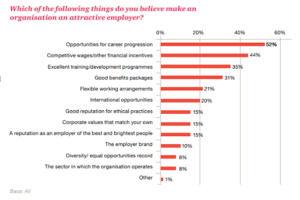While working from home, in and of itself, used to be considered a perk, it is quickly becoming the norm, whether 100% remote or the more popular hybrid model where employees work two or three days from home and the remainder in the office. However, this change has made other “in-office” perks more elusive. 5 HR trends you should be paying attention to in 2022: HowNow (gethownow.com)Benefits like free lunches, after-work happy hours, and casual Fridays are difficult to consider when working in an all or partial work from home environment. So, what perks do employees want most in this new world?
Global benefits and rewards platforms are popping up all over that allow companies to care for, connect with and celebrate their employees no matter where they are or what they want. These platforms focus not only on physical wellbeing but also on social/emotional and financial wellbeing. As the lines between work and home continue to blur, employees have growing expectations that employers will view them as holistic human beings where work is a part of their identity, but certainly not their whole identity. A study by Perkbox Global Employee Benefits and Rewards Platform | Perkbox suggests that over half of the employees surveyed said Employee discounts are the most coveted. This was followed by a three-way tie for greater recognition for your work, unlimited amount of vacation time, and at-home entertainment. There is also growing demand for mental health or wellness days and extended free mental health counseling services.
Employee Discounts
There is a myriad of market leaders who provide Employee discounts. Some of the larger include names like Corporate Offers, www.corporateoffers.com Next Jump www.nextjump.com, and Anyperk www.anyperk.com. Most of these services have both a free, limited option service and a paid service. Normally these will differ in the way an employer can customize the specific offerings to their employee base. If you choose to go this route, do your due diligence. A common complaint is that these services may not offer better discounts than employees can get on their own
Recognition
Study after study has proven that there is a very weak correlation between remuneration and an employee’s job satisfaction. A study from the Saratoga Institute looked at more than 19,000 exit interviews. When they asked the managers or supervisors why their employees had quit, nearly 90% of the supervisors cited reasons related to remuneration. In nine out of ten instances, they believed their employees quit to pursue a job with a larger salary. On the other hand, 88% of employees said clearly that their reasons for leaving had nothing to do with their salary. The data on this issue is pretty cut and dried. In most instances, people choose to leave their current position because of poor leadership from the person they report directly to. What employees really want, once they feel they are compensated fairly, is to be appreciated personally and professionally by the company and their manager. They want to be connected to a larger purpose, but they also want their work and contributions to be acknowledged and appreciated, no matter how small.
Certainly, ensure each of your team members is fairly compensated for the work they are doing, but remember to take the time to truly appreciate what they are contributing and help them to see how it is connected to the larger company goals and purpose. Take time to call out the traits that are unique and let them know you appreciate them!

